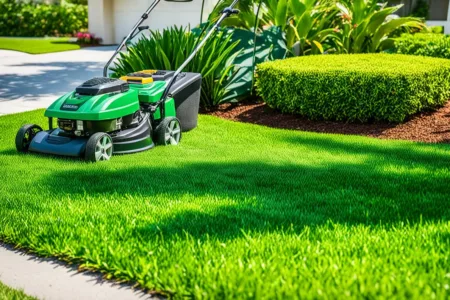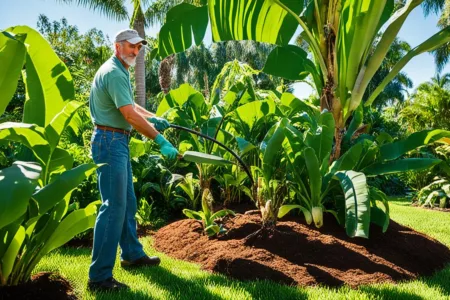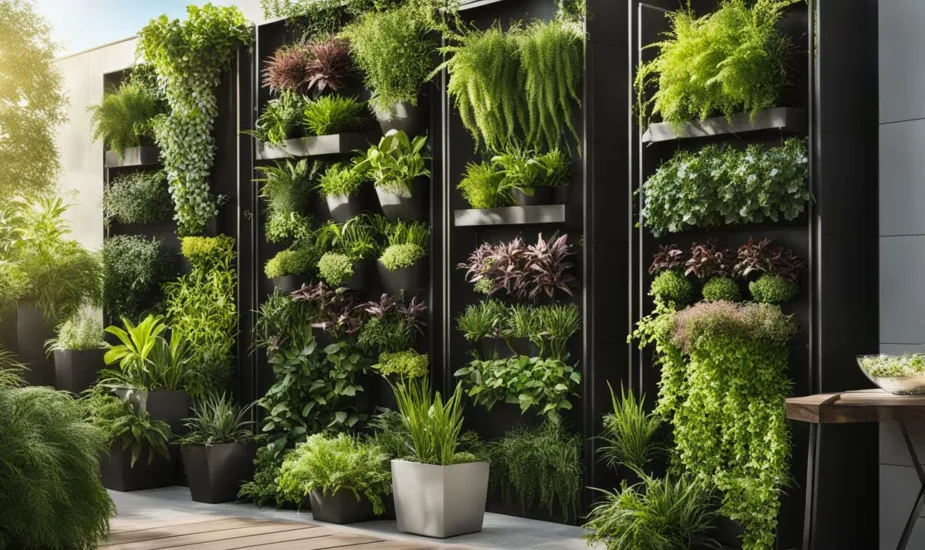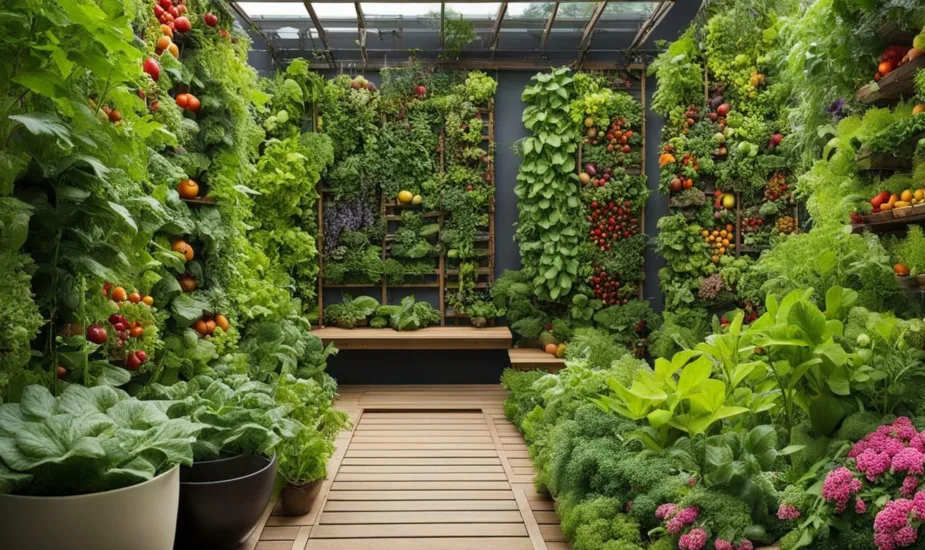Green Thumb’s Guide to Vertical Gardening Systems
Did you know that vertical gardening systems have revolutionized the way we grow plants, making it possible to create lush and vibrant gardens even in small spaces?
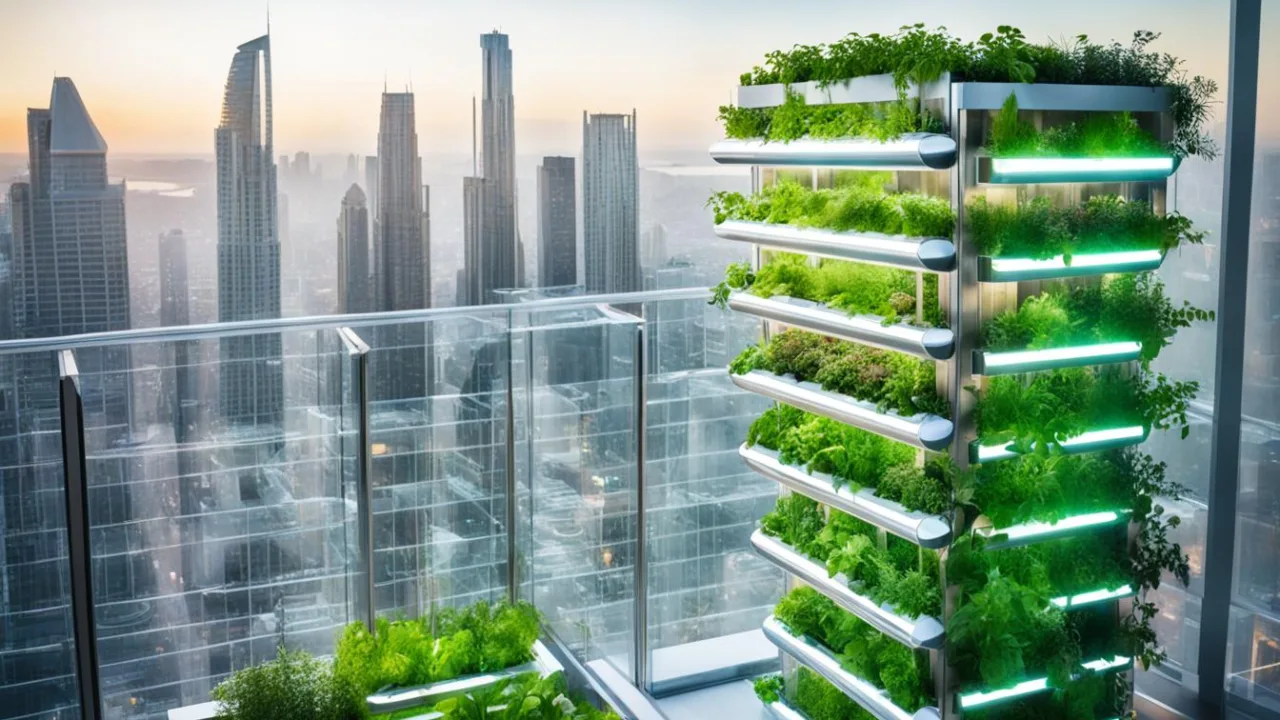
Whether you have a cramped balcony, limited backyard space, or want to bring the beauty of nature indoors, vertical gardening systems offer a space-saving solution that can transform any area into a thriving oasis. In this comprehensive guide, I will take you on a journey through the world of vertical gardening, from its definition and benefits to designing, maintaining, and harvesting your own vertical garden. Get ready to unleash your green thumb and discover the wonders of vertical gardening systems.
Key Takeaways:
- Vertical gardening systems allow you to create beautiful gardens in small spaces.
- These systems offer a space-saving solution for urban areas and limited outdoor areas.
- Indoor vertical gardening brings the beauty of nature inside your home.
- Vertical gardening systems provide numerous benefits, including maximizing space and creating visually appealing gardens.
- In this guide, we will explore every aspect of vertical gardening, from design considerations to plant selection and maintenance tips.
Introducing Vertical Gardening: A Space-Saving Revolution
In this section, I will provide an introduction to vertical gardening, a popular option for gardeners looking to maximize space and showcase their creativity. By utilizing vertical spaces, you can create stunning gardens that add beauty to any indoor or outdoor environment. Let’s explore the concept of vertical gardening and discover its numerous benefits.
Defining Vertical Gardening and Its Benefits
Vertical gardening is a method of growing plants vertically, utilizing walls, fences, or specially designed structures. It is a space-saving technique that allows you to cultivate plants in a vertical arrangement, making the most of limited space. This innovative approach to gardening offers several benefits:
- Maximizing space: Vertical gardening allows you to grow a variety of plants in a small area, making it ideal for urban dwellers with limited space.
- Enhancing aesthetics: By creating a vertical garden, you can transform plain walls or empty spaces into stunning green environments that add beauty and visual interest to your surroundings.
- Improving air quality: Vertical gardens help filter the air, absorbing pollutants and releasing oxygen, resulting in cleaner and fresher indoor or outdoor environments.
- Reducing energy consumption: Vertical gardens can act as natural insulation, reducing the need for artificial heating and cooling, thus lowering energy consumption.
With these benefits in mind, vertical gardening has become a popular choice among plant enthusiasts and design enthusiasts alike.
Choosing the Right Location for Maximum Sun Exposure
One of the key factors for the success of your vertical garden is choosing the right location. Sunlight is essential for plant growth, so it’s important to place your vertical garden in an area that receives adequate sunlight. Here are some tips to help you select the perfect location:
- Outdoor vertical gardens: Find a spot that receives at least six hours of direct sunlight per day. Consider factors such as shading from nearby buildings or trees that may obstruct sunlight.
- Indoor vertical gardens: Place your vertical garden near a window that receives ample sunlight. South-facing windows generally provide the most sunlight, while east-facing windows offer morning sun, and west-facing windows receive afternoon sun.
Properly positioning your vertical garden to maximize sun exposure will ensure that your plants receive the necessary light for photosynthesis and healthy growth.
Now that you understand what vertical gardening is and how it can benefit you, as well as the importance of choosing the right location for optimal sun exposure, it’s time to delve into the exciting world of vertical garden design. In the next section, we will explore various design considerations and ideas to help you create your own unique vertical garden masterpiece.
Designing Your Vertical Garden: Creativity Meets Practicality

Designing your vertical garden is where creativity meets practicality. In this section, I will discuss various design considerations for your vertical garden, including different types of structures, materials, and styles. I will also provide you with a range of vertical garden ideas to inspire your creativity and help you design a unique and personalized garden. Additionally, I will explore vertical gardening solutions and kits that can make the design and setup process easier. Whether you have a green thumb or not, designing your vertical garden is an exciting and rewarding part of the process.
The Best Plants for Your Vertical Gardening Systems

Choosing the right plants for your vertical gardening systems is crucial for the success of your garden. In this section, I will explore the best plants for vertical gardens, focusing on both edible plants and decorative flora.
Edible Plants Perfect for Vertical Settings
Vertical gardening offers an excellent opportunity to grow your own food, even in small spaces. Here are some ideal edible plants for vertical settings:
- Herbs: Easily grown in vertical gardens due to their compact size, herbs such as basil, mint, and thyme are a great addition to any culinary garden.
- Vegetables: Opt for compact varieties like tomatoes, lettuce, and peppers that thrive in vertical systems. These provide fresh produce for salads and other delicious dishes.
- Fruit Trees: Certain fruit trees, such as dwarf varieties of apple, peach, and fig, can be trained to grow vertically. This allows you to enjoy homegrown fruits even in limited spaces.
By growing edible plants vertically, you can create a bountiful and convenient source of fresh ingredients right at your fingertips.
Decorative Flora to Elevate Your Living Space
In addition to edible plants, decorative flora plays a crucial role in enhancing the visual appeal of your vertical garden and elevating your living space. Consider incorporating the following plants:
- Flowering Vines: Climbing plants like morning glories, clematis, and jasmine add vibrant colors and a touch of elegance to your vertical garden.
- Foliage Plants: Plants with interesting foliage, such as ferns, ivy, and succulents, create lush greenery and add texture to your garden.
- Air Plants: Known for their unique ability to grow without soil, air plants like tillandsias are perfect for vertical gardens. They can be attached to various structures and bring a modern and artistic touch to your space.
By strategically choosing decorative flora, you can transform your vertical garden into a beautiful oasis that complements your living environment.
DIY Vertical Garden Projects: Simple Solutions for Any Gardener

If you are a DIY enthusiast or simply looking for cost-effective solutions, this section is for you. We will explore DIY vertical garden projects that are simple and easy to implement, regardless of your gardening experience. From repurposing everyday items to creating your own vertical garden planters, we will provide you with step-by-step instructions and tips to help you create a beautiful and functional DIY vertical garden. Whether you have a small balcony or a large backyard, these DIY projects will inspire you to get creative and transform your space into a thriving vertical garden.
Vertical gardening allows you to maximize your space and create a stunning green oasis, even in the smallest of areas. With a little creativity and some basic DIY skills, you can turn ordinary materials into unique vertical garden structures that will impress everyone who sees them.
One popular DIY project for a vertical garden is repurposing wooden pallets. You can easily transform a pallet into a vertical planter by adding shelves or attaching small pots directly to the pallet. This is a cost-effective and eco-friendly way to create a vertical garden that can be placed against a wall or fence.
Another DIY solution is using PVC pipes to create a vertical garden planter. By cutting the pipes into different lengths, you can create a cascading effect that allows plants to thrive vertically. This is a great option for those who want to grow herbs or small flowering plants indoors.
For a more unique and artistic approach, consider using recycled bottles or cans to create a hanging vertical garden. Simply clean and prepare the containers, then hang them on a wall or from a ceiling using ropes or hooks. This DIY project not only adds a touch of creativity to your space but also promotes recycling and sustainability.
Remember to choose plants that are suitable for vertical gardening. Herbs like basil, mint, and thyme are excellent choices for vertical gardens, as they require minimal space and can easily be harvested for culinary use. Additionally, succulents and trailing plants like pothos and ivy can add a lush and vibrant look to your vertical garden.
With these DIY vertical garden projects, you don’t need to be an expert gardener to create a stunning and functional garden in any space. So roll up your sleeves, gather your materials, and let your creativity bloom with these simple and inspiring ideas.
Maintaining Your Vertical Garden: Tips for Long-Term Health

Once you have set up your vertical garden, it is important to properly maintain it to ensure the long-term health of your plants. In this section, I will provide you with valuable tips and techniques that will help you keep your vertical garden thriving.
Watering Techniques for Vertical Arrangements
Watering your vertical garden correctly is essential for the optimal growth and health of your plants. Here are some watering techniques specifically designed for vertical arrangements:
- Water from the top: Since gravity will naturally pull the water down, it is important to start watering from the top of your vertical garden. This allows the water to trickle down and reach every plant.
- Monitor soil moisture: Check the moisture level of the soil regularly, making sure it doesn’t dry out completely or become waterlogged. Use your fingers to feel the soil or invest in a moisture meter to ensure proper hydration.
- Install a drip irrigation system: Consider installing a drip irrigation system in your vertical garden. This automated system delivers water directly to the roots of your plants, providing consistent moisture and reducing water waste.
By following these watering techniques, you will provide your vertical garden with the proper hydration it needs to thrive.
Combating Pests With Organic Solutions
Pests can be a common issue in any garden, including vertical gardens. However, there are organic solutions that can help you combat unwanted pests without resorting to harmful chemicals. Here are some effective methods to consider:
- Introduce beneficial insects: Encourage the presence of beneficial insects, such as ladybugs and lacewings, which naturally prey on pests like aphids and caterpillars. You can attract these beneficial insects by planting companion plants that they find attractive.
- Use organic pest sprays: Create homemade pest sprays using natural ingredients like neem oil, garlic, or soap. These sprays can help control pests and protect your plants without harming beneficial insects or the environment.
- Practice good garden hygiene: Regularly inspect your vertical garden for signs of pests or diseases. Remove any damaged or infested leaves and keep the area clean and free from debris, as this can help prevent pest infestations.
With these organic pest control methods, you can effectively protect your plants and maintain a healthy and thriving vertical garden.
By implementing these maintenance tips, you can ensure the long-term health and success of your vertical garden. Proper watering techniques and organic pest control solutions will help your plants thrive and provide you with a beautiful and bountiful garden for years to come.
Conclusion
In conclusion, vertical gardening systems offer a multitude of benefits that make them the perfect choice for small spaces and urban green spaces alike. One of the greatest joys of vertical gardening is the ability to harvest your own garden, enjoying the satisfaction of growing your own food or creating a beautiful living space.
Vertical gardening opens up a whole new world of possibilities for gardeners, regardless of their experience level. Whether you are a seasoned gardener or a beginner, the space-saving nature of vertical gardens allows you to create a thriving garden even in limited areas. With vertical garden design, you can transform a barren wall or a small balcony into a vibrant ecosystem filled with lush greenery and colorful blooms.
But the benefits of vertical gardening go beyond personal enjoyment. As urban spaces become increasingly crowded, vertical gardens offer a solution to limited space and environmental concerns. These gardens not only provide a visually appealing landscape but also have a positive impact on urban green spaces. By utilizing vertical space, we can bring nature back into our cities and contribute to the well-being of our environment.
So, whether you are looking to maximize your small outdoor space or bring the beauty of nature indoors, vertical gardening systems are the way of the future. Embrace the possibilities and join the green revolution by incorporating vertical gardens into your life. With their space-saving design and endless creativity, vertical gardening systems allow us to enjoy the benefits of gardening in any space, no matter how small.
FAQ
What is vertical gardening?
Vertical gardening is a method of growing plants vertically instead of horizontally, using structures or planters that can be attached to walls, fences, or other vertical surfaces.
What are the benefits of vertical gardening?
Vertical gardening maximizes space, making it ideal for small outdoor spaces or indoor gardens. It also adds visual interest to any area and allows for easy maintenance and harvesting.
How do I choose the right location for my vertical garden?
Choose a location that receives ample sunlight for the specific plants you plan to grow. Consider factors such as shade, wind exposure, and accessibility for maintenance.
What are some vertical gardening design considerations?
Consider different types of structures, materials, and styles for your vertical garden. Take inspiration from vertical garden ideas and explore vertical gardening solutions and kits for easy design and setup.
What are the best plants for vertical gardens?
Edible plants such as herbs, vegetables, and fruit trees can thrive in vertical settings. Decorative flora such as flowers and foliage plants can also add beauty to your vertical garden.
How can I create a DIY vertical garden?
You can repurpose everyday items or create your own vertical garden planters with simple materials. Look for DIY vertical garden projects that suit your space and gardening experience.
How do I maintain a vertical garden?
Proper watering techniques are important for vertical gardens, as plants may have unique hydration needs. You can also combat pests with organic solutions for a healthy garden.
What are the joys of harvesting your own vertical garden?
Harvesting your own vertical garden allows you to enjoy fresh, homegrown produce, herbs, or flowers. It also gives you a sense of accomplishment and a connection to nature.
Why is vertical gardening the future for urban green spaces?
Vertical gardening offers space-saving solutions for urban areas, allowing people to enjoy greenery and nature in limited spaces. It also contributes to a more sustainable and environmentally friendly environment.
 Little Garden Tips
Little Garden Tips

